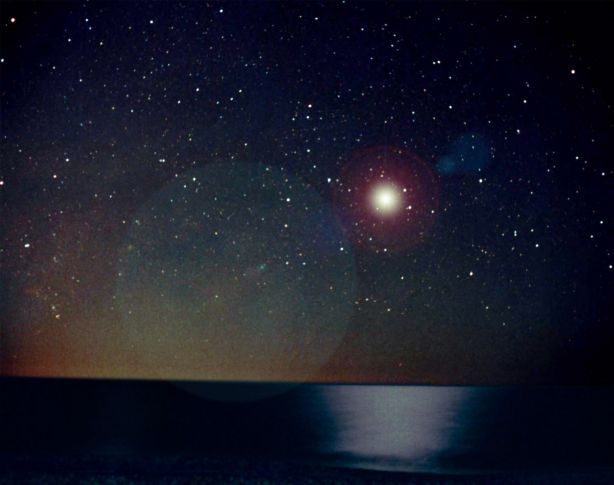Credit: TunГ Tezel
Explanation:
A new star, likely the
brightest supernova in recorded
human history,
appeared in planet Earth's sky in the year 1006 AD.
The expanding debris cloud
from the stellar explosion is still
visible to modern astronomers, but what did the supernova look
like in 1006?
Astronomer
TunГ Tezel
offers this suggestion, based on a photograph
he took on February 22, 1998 from a site overlooking
the Mediterranean south of Antalya, Turkey.
On that date, bright Venus and a waning crescent Moon
shone in the early morning sky.
Adopting
recent
calculations which put the supernova's apparent
brightness between Venus and the crescent Moon,
he digitally superposed an appropriate new star in the picture.
He placed the star at the supernova's position in the
southerly constellation of Lupus
and used the water's reflection
of moonlight in the final image.
Tezel hopes to view the total solar eclipse of
29
March 2006 from
this same site -- on the 1,000th anniversary of
Supernova
1006.
1999 2000 2001 2002 2003 2004 2005 2006 2007 |
Январь Февраль Март Апрель Май Июнь Июль Август Сентябрь Октябрь Ноябрь Декабрь |
NASA Web Site Statements, Warnings, and Disclaimers
NASA Official: Jay Norris. Specific rights apply.
A service of: LHEA at NASA / GSFC
& Michigan Tech. U.
|
Публикации с ключевыми словами:
SN 1006 - supernova - magnitude - Сверхновые - звездная величина
Публикации со словами: SN 1006 - supernova - magnitude - Сверхновые - звездная величина | |
См. также:
Все публикации на ту же тему >> | |
